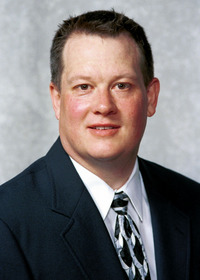Lawn Institute Finds Unexpected Link Between Lawns, Obesity (1-17-11)
Americans are getting fatter and fatter. We see reports of this phenomenon frequently in the news and even more so in the malls (especially around the fast-food court).
Big meals and not enough exercise are probably the most readily identified causes for obesity. Other factors include individual preferences for driving versus walking and taking elevators rather than stairs. At home, we sit on the deck, patio or couch and play computer games rather than yard games.
U.S. Health and Human Services Secretary Tommy G. Thompson started a new line of exploratory thinking at a press conference to announce the new Focus On Your Health: Physical Fitness program.
“Playing with your kids in the backyard for an hour each day can help the whole family stay healthy,” Thompson said.
The staff of The Lawn Institute began to ponder if that simple advice could in fact be put into practice. They asked how likely is it that a sizeable number of Americans have a backyard where they could play with their kids? The results of their admittedly non-scientific research were astounding.
While America’s population is getting larger, its home lawns are getting smaller.
Consider these observations:
- Home sizes are increasing and individual residential lot sizes are being reduced to address urban sprawl issues. Homebuilders also like this profit increasing approach.
- Between 1986 and 2002 (17 years), the median square footage of new single family homes expanded 41.1 percent, from 1,655 to 2,336 square feet.
- A greater percentage of smaller lots are being covered in hard surfaces such big houses, patios, decks, sidewalks or driveways for three-car garages, leaving less space for landscaping.
- Outdoor water conservation ordinances can restrict areas for grass planting, and some cities are even paying homeowners a sizeable amount to remove existing grass from their landscape.
- Garden writers, designers and plant merchandisers encourage the use of colorful flowers, mulch beds or rock and water gardens as a grass replacement.
Based on the Lawn Institute’s initial assessments, there is indeed a strong link between increases in obesity and reductions in lawns. While not a one size fits all formula, it's certain that encouraging larger lawns and more activities on those lawns, including viewing lawn care as a valuable form of exercise, could not make the problem with obesity any worse and there’s a very high likelihood that as the lawns increased the sizes of the people would decrease.
Published January 17, 2011
Dr. Wayne Wells is an Extension Professor and Turfgrass Specialist. His mailing address is Department of Plant and Soil Sciences, Mail Stop 9555, Mississippi State, MS 39762. wwells@ext.msstate.edu




